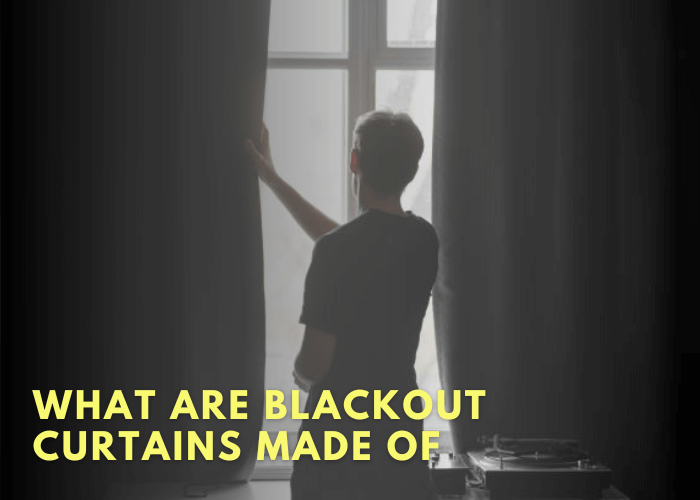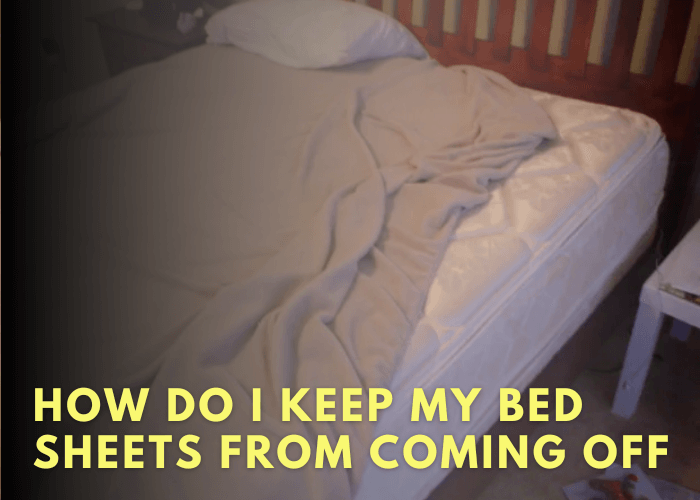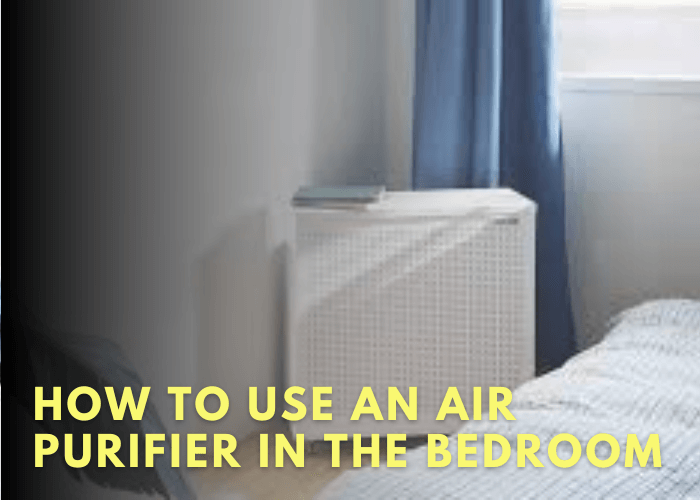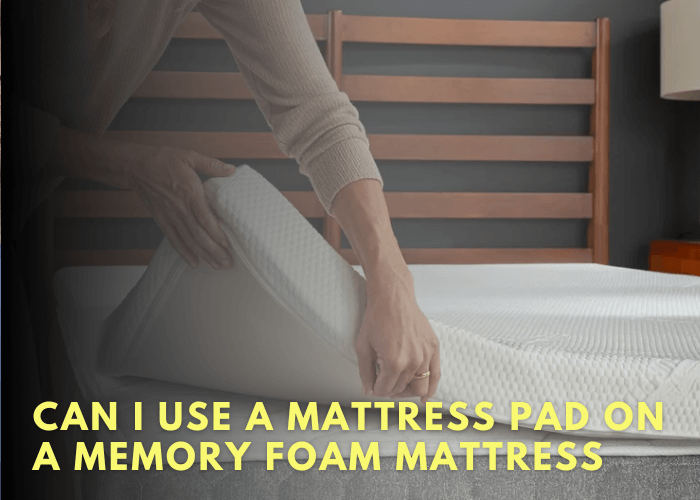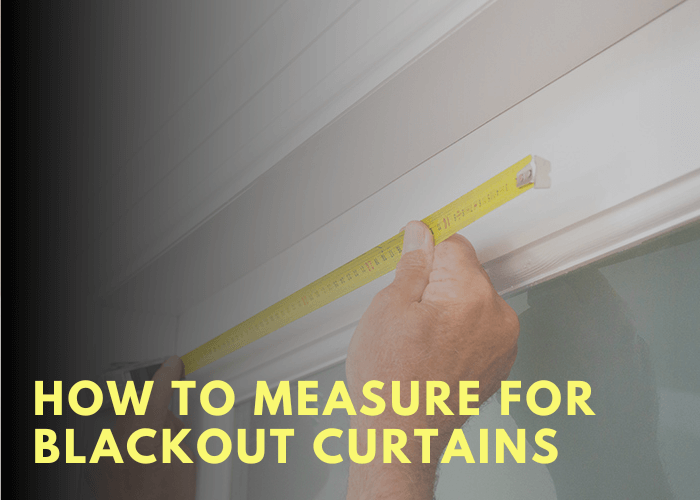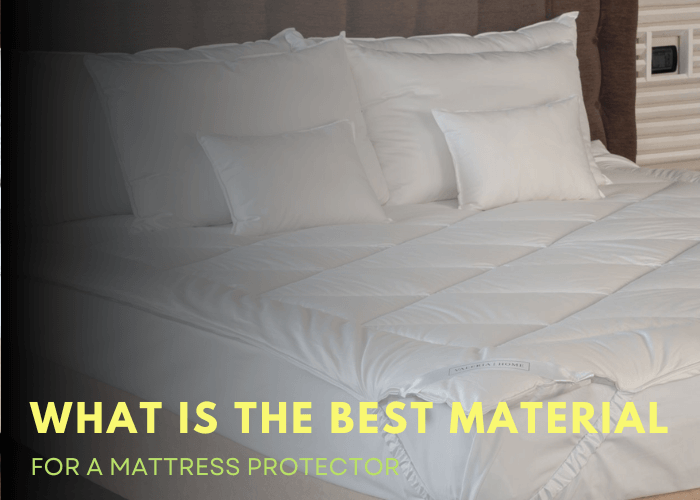Blackout curtains can be a blessing for those who need a good night’s sleep. But what are they made of?
Cotton and polyester are two of the most popular materials used in blackout curtains.
What Are Blackout Curtains Made Of? Cotton provides a natural look and feel that blends with any décor, while polyester is often more affordable and easier to clean. Both fabrics come in a wide range of colors and patterns, so finding the perfect match for your room shouldn’t be difficult.
Linings can also play an important role in creating blackout curtains.
A lining can boost insulation values, reduce light leakage, and add a layer of protection from dust and allergens.
From lightweight cotton-polyester blends to heavy duty acrylics, linings come in various weights to suit any window size or style preference.
This article will explore the materials used to create these dark and dreamy draperies.
1. Types Of Blackout Curtains

Blackout curtains are a popular choice for those seeking to reduce light from their windows. They come in several types and materials, allowing for greater customization.
The most common blackout curtain is made from polyester.
This type of curtain has a heavy feel and blocks out most of the light entering the room.
It also helps to reduce external noise, making it ideal for those who want some additional privacy or soundproofing.
Other materials used to make blackout curtains include cotton, velvet, and silk.
These fabrics have the added advantage of being more aesthetically pleasing than polyester, making them an ideal choice for more elegant rooms.
Each material has its own benefits, so it’s important to research which type best suits your needs before purchasing any blackout curtains.
No matter which type you choose, blackout curtains can help provide extra darkness and privacy in any room.
2. Benefits Of Blackout Curtains
Blackout curtains provide multiple advantages.
They are a popular choice for bedrooms and media rooms, as they block out any light coming into the room.
Here, we’ll look into the benefits of blackout curtains and how they could potentially improve your home.
Firstly, most blackout curtains are designed to be soundproof.
This means that the fabric absorbs noise from outside and prevents it from entering the room.
This can be especially helpful if you live in a noisy area or close to a busy street.
Secondly, blackout curtains can help save energy costs in your home by keeping warm air inside during winter months and cool air inside on hot days.
This can lead to a decrease in your electricity bill over time as you won’t have to turn up your air conditioning or heating systems as often.
Here is a list of additional reasons why blackout curtains are beneficial:
- Increased privacy – Blackout curtains will keep prying eyes out of your house while still allowing natural light in during the day
- Improved sleep – They block out any extra light which may affect your ability to get restful sleep
- Reduced dust – The heavy material blocks dust particles from entering the room
- Stylish designs – You can choose between different materials, patterns and colors to match any decorating theme
In short, blackout curtains offer many advantages when it comes to blocking light, sound and dust from entering a room.
Furthermore, these heavy drapes can also contribute to energy efficiency within the home and come in various attractive designs that can complement any interior style.
3. Construction Of Blackout Curtains
Blackout curtains have many benefits. But, what about the construction? It is important to understand the materials used for these curtains.
The main components of blackout curtains are the fabric and liner. The fabric is typically heavy and lined with a light-blocking material, such as foam or vinyl.
This makes them effective in blocking out sunlight and providing privacy.
The fabric also helps to reduce outside noise.
Lining is often made of a thicker fabric that acts as an insulation layer.
This helps to keep heat in during winter months, while keeping it out during the summer months.
It also serves as a sound barrier between rooms, helping to reduce noise pollution from outside sources.
The fabrics used for blackout curtains come in many different varieties, including cotton, velvet, linen, polyester, and more.
Each type has its own unique set of advantages and disadvantages in terms of insulation properties and noise reduction capabilities.
Understanding these differences can help you choose the right type for your needs.
4. Fabrics Used For Blackout Curtains
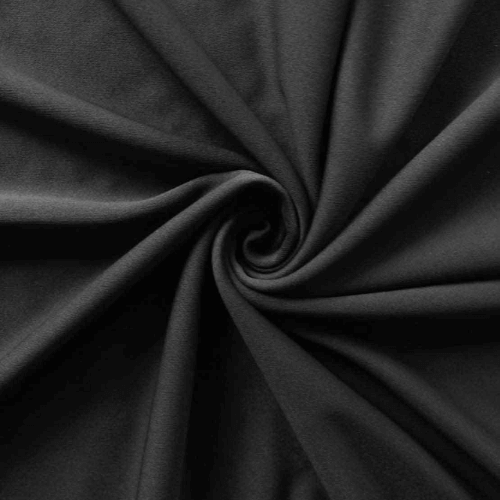
Darkness is our friend. It envelops us in a comforting way, providing both safety and privacy. And when it comes to a good night’s sleep, blackout curtains are our best ally.
To make sure you get the most out of your blackout curtains, let’s look into what they’re made of. There are a few key ingredients:
- Synthetic fabrics such as polyester, nylon, or rayon
- Tightly woven natural fabrics like cotton and linen
- A special reflective backing coating for additional light blocking capabilities These materials form the foundation for an effective blackout curtain that will keep the light out—even if the sun is shining brightly outside.
The synthetic fabrics do the heavy lifting in terms of blocking out light, while natural fibers add texture and breathability.
The reflective coating on the back is what seals the deal; it helps to create an opaque barrier that keeps sunlight from entering through any cracks or crevices between the fabric and window frame.
When it comes to choosing the right fabric for your blackout curtains, it really depends on how much light you want to block out and which aesthetic you prefer for your space.
So take your time finding what works best for you—it’ll be worth it in the end!
Alternatives To Blackout Curtains
Shielding your abode from the sun’s glaring rays can be a tricky task. Fortunately, if blackout curtains don’t suit your needs there exist alternatives. Let’s explore these options and find the one that works best for you.
Like a knight in shining armor, blinds come to the rescue when it comes to blocking out excess light.
Whether you go for vertical or horizontal slats, they will provide excellent coverage without obstructing your view of the outside world. Other advantages include:
- The ability to quickly adjust the amount of light entering a room
- An array of colors and materials to choose from
- No need to remove them during cleaning as they can simply be wiped down with a damp cloth
- Easy installation
If you’re looking for something more sophisticated, shutters are an ideal solution.
Their timeless design adds an air of elegance while also providing superior insulation against heat and sound.
And although their price tag may be slightly higher than other alternatives, their durability is well worth the extra cost.
So whether you opt for blinds, shutters or another option altogether, there are plenty of ways to get creative when it comes to keeping out unwanted sunlight from your space.
With a bit of research and planning, you’ll be able to find just the right thing that fits both your style and budget.
Frequently Asked Questions
How Effective Are Blackout Curtains?
Blackout curtains are an essential feature for many homes and businesses. They provide a number of advantages when it comes to light control. So how effective are they?
Let’s take a look.
Firstly, blackout curtains are made of thick, dense materials like polyester or velvet. These fabrics help keep out the light and ensure that rooms stay dark even during the day. They also help insulate rooms against heat and cold, making them energy efficient and cost-effective. Here are some other benefits:
1. Blackout curtains come in various shades, so you can easily match them to your decor.
2. They’re easy to install and maintain – no need for special tools or products.
3. They reduce noise from outside sources such as traffic or neighbors.
4. You can choose between manual or motorized versions, depending on your needs.
5. Some models offer UV protection to prevent fading of furniture and artwork over time.
In short, blackout curtains are an excellent choice if you want complete control over the amount of light entering a room while maintaining privacy and saving on energy costs.
Plus, they offer a range of other benefits that make them worth considering for any home or business owner looking for an efficient way to manage their window treatments.
Do Blackout Curtains Come In Different Colors?
Darkness descends like a curtain, cloaking the world in mystery and serenity. Blackout curtains provide this same comforting darkness, but with a practical purpose.
Do blackout curtains come in different colors? Indeed they do – an array of options awaits those seeking to enhance their home’s atmosphere while blocking out harsh light. Here are three reasons why homeowners may opt for blackout curtains:
1. To reduce glare on screens and other reflective surfaces
2. To promote better sleep by blocking out excess light in the bedroom
3. To create a more inviting atmosphere in any room of the house
Blackout curtains come in many colors and patterns, from bold hues to subtle pastels. Whether you choose classic navy blue or vibrant red, blackout curtains will add a personal touch to your interior decorating efforts while providing all the benefits of their light-blocking powers.
Do Blackout Curtains Reduce Noise?
Blackout curtains have become increasingly popular in recent years. They are designed to block out light from outside, providing privacy and better sleep for those inside. But do blackout curtains also reduce noise?
There are several benefits of using blackout curtains in your home. Firstly, they can be effective at blocking out sound from outside. The curtain’s heavy fabric can help absorb noise from the street, reducing it significantly.
In addition, their construction helps to improve insulation, keeping cold and hot air from transferring through windows and walls. Moreover, blackout curtains come in a variety of colors and materials to suit any room or budget:
1. Faux silk – a lightweight material with a glossy finish
2. Velvet – thick material that hangs well and is available in many shades
3. Thermal – insulated fabric which blocks both light and heat
4. Cotton – natural fibers known for their comfort and breathability
5. Polyester – strong yet lightweight, ideal for blocking out light
Overall, blackout curtains are an excellent option if you’re looking to reduce noise levels in your home while maintaining privacy.
Not only do they come in a variety of colors and materials, but they are also effective at blocking out sound from outside.
With so many benefits on offer, it’s easy to see why these curtains are becoming so popular.
Conclusion
Blackout curtains can be a great way to darken a room and reduce noise, making them ideal for bedrooms and nurseries.
Studies have shown that blackout curtains can reduce the amount of light entering the room by up to 99%. That’s an impressive statistic which shows just how effective they can be.
Blackout curtains come in a variety of colors, ranging from neutral tones to vibrant hues.
They are also fire retardant and most are machine washable too.
This makes them an easy choice when it comes to updating your home décor without sacrificing safety or durability.
Overall, blackout curtains are a great option if you’re looking for ways to improve your sleep quality or reduce noise.
As well as providing privacy, they offer practical benefits that make them a great addition to any home.
So why not check out what blackout curtains have to offer? You won’t be disappointed!

